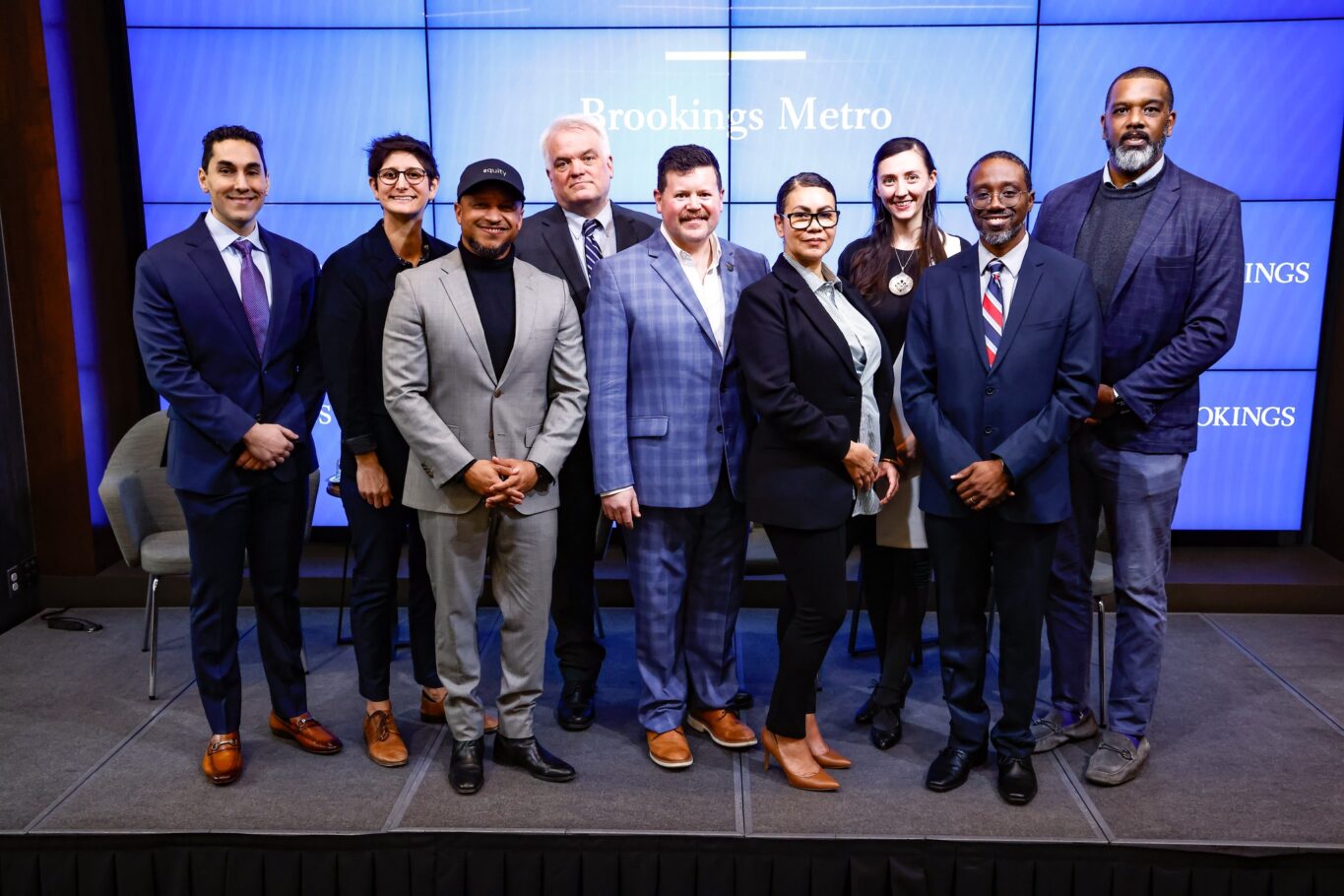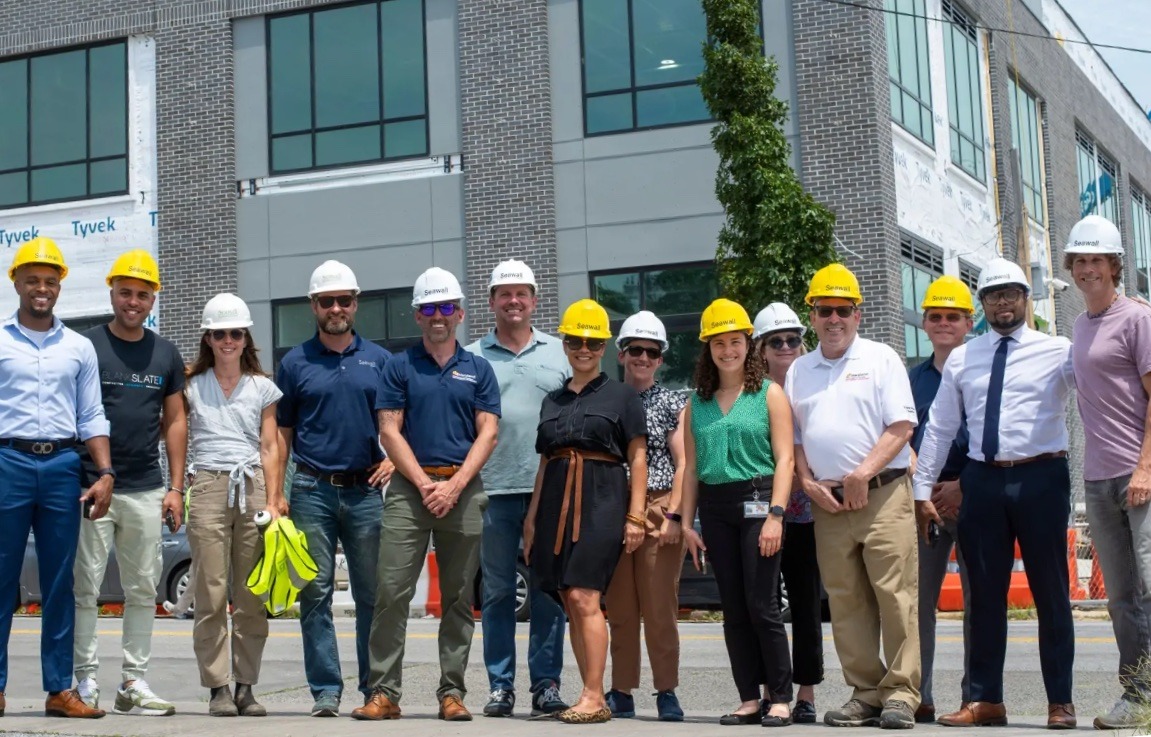Led by Spotlight Innovator Cat Goughnour, the Maryland Department of Housing and Community Development (DHCD) Division of Just Communities is pioneering a reparative approach to public investment through the Just Communities designation—the first of its kind in the nation—to target funds to historically disinvested areas. From the start of the Moore-Miller Administration, Housing Secretary Jake Day prioritized addressing systemic inequities, creating a Division of Just Communities and appointing Goughnour as assistant secretary to lead this innovative effort.
The Just Communities designation, established by the Just Communities Act of 2024, builds on the resilience and strength of communities of color and low-income areas by directly addressing the legacy of exclusionary policies and ensuring sustained investment in their continued growth. By using innovative data tools to target and track long-term reinvestment, the state of Maryland is taking active steps to repair the harm caused by practices such as redlining, housing segregation, and targeted disinvestment.
Under Goughnour’s leadership, the Division is fundamentally changing how state resources are allocated. A cornerstone of this shift is the development of a geospatial mapping tool that highlights opportunities to invest in the strengths and potential of neighborhoods across Maryland. This tool identified 419 census tracts impacted by accumulated disinvestment enabling the state to proactively prioritize areas for reinvestment based on objective, community-informed data. By recognizing the enduring value and vision of these communities—without requiring them to prove their worth—it transforms the investment process into one of affirmation and accountability. This approach marks a structural departure from past practices, ensuring that equity—not historical neglect—guides decision-making.
While Maryland has supported equity and community development efforts in the past, the Just Communities Act creates a new level of sustained commitment, coordination, and capital across agencies. It shifts accountability to the state, requiring public policies and investments to advance reparative justice and address the entrenched inequities that have limited opportunity for generations.
“This program is about justice and rebalancing the scales. Is government known for doing reparative, restorative, corrective justice? Not always–but with this approach, it could be,” says Goughnour.
Goughnour joined Maryland DHCD in 2023 as the Just Communities Act started to move through the legislative process. An experienced social scientist and economic and community development practitioner, she immediately recognized the Act’s potential.

“I saw language that acknowledged past exclusions—terms like ‘subprime’ and ‘redlining’—but more importantly, I saw a commitment to intentionally direct investment into communities whose contributions have long deserved recognition. The opportunity to turn that promise into reality, and perhaps even create a model for other states, holds immense promise.”
In 2024, Governor Wes Moore signed the Just Communities Act into law, and the Division of Just Communities must ensure its implementation. The Division’s charge: to identify neighborhoods shaped by the dual forces of historic discrimination and enduring community effort, and to channel sustained, strategic investment into their futures.
That same year, the Division released a baseline report detailing how housing and infrastructure policies have shaped current conditions, while also highlighting the persistence, organizing, and vision of residents who have worked for decades to strengthen their communities. Central to this work is the creation of the Just Community legislation: a ground-breaking law that enabled the evaluation of each of Maryland’s 1,463 census tracts’ history, current conditions, and investment potential.

To calculate the target areas, Goughnour’s team developed a geospatial mapping tool that integrated diverse data points, including housing stability, affordability, incarceration rates, homeownership access, environmental and health indicators, and the legacy impacts of infrastructure decisions. This comprehensive tool provides a nuanced, community-rooted picture of opportunity and need, enabling the state to align reinvestment with community-defined goals and strengths.
On Juneteenth, Governor Moore confirmed the first wave of neighborhoods to receive the “Just Community” designation. These communities have received priority consideration for funding from DHCD and other state agencies through the People-Centered Placemaking Initiative for a five-year term. This approach ensures that investments are not only targeted, but sustained, integrated across sectors, and driven by community visions for inclusive growth.
The communities poised to benefit from this initiative are diverse and distinct, each with what Goughnour refers to as being rich in “work, wealth, and wisdom.” They may include urban neighborhoods in Baltimore, post-Civil War kinship communities, and rural and small towns shaped by resilience and multigenerational stewardship. Each has its own origin stories and development priorities and strengths, requiring investments that are not just equitable, but tailored.
“Most importantly, we need to ensure we are driving resources into communities and not just into institutions,” said Goughnour. This approach ensures that investments not only support enduring community-led growth but reflect and retain the cultural capital and inherited knowledge of those most affected.
Over the next five years, Maryland’s Just Communities model stands to redefine how public resources serve historically underinvested neighborhoods, transforming one-time interventions into long-term partnership by leveraging the state’s initial round of public investment and coordinating efforts across State agencies. By embedding equity into the state’s investment infrastructure and evaluation methodology, the model offers a replicable path for other states seeking to move from acknowledgment to action.
